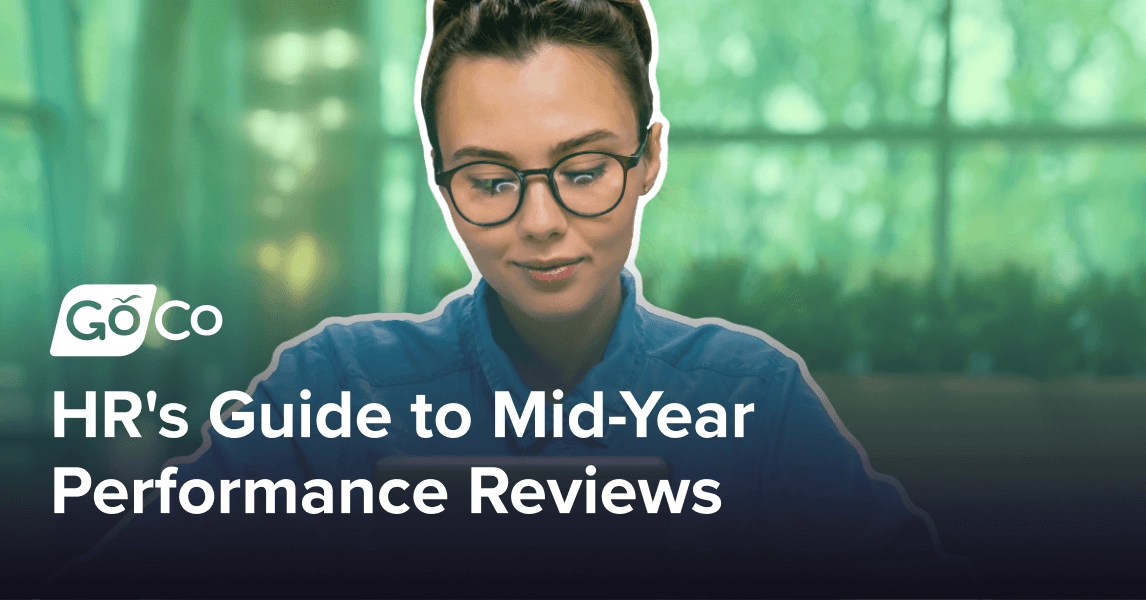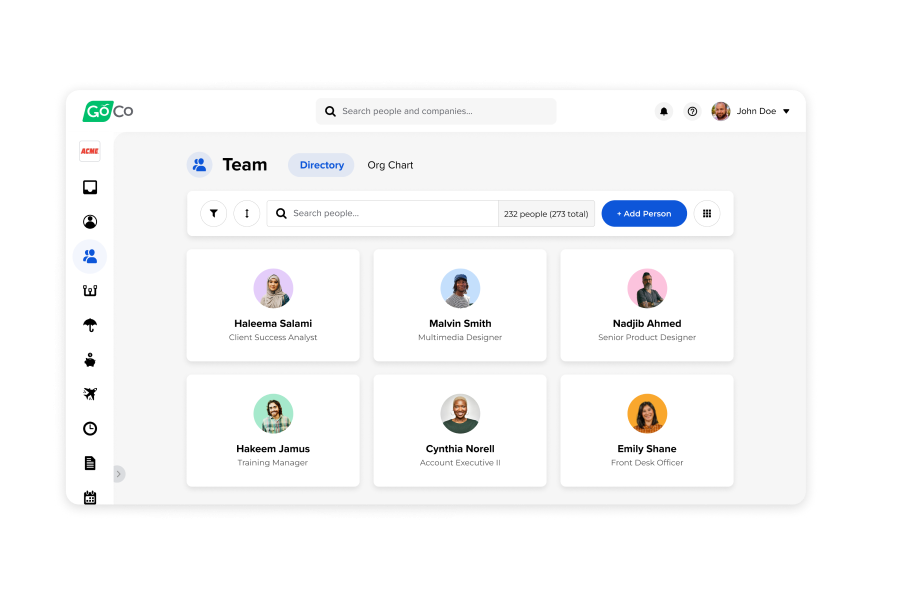HR's Guide to Mid-Year Performance Reviews
An HR cheat sheet for mid-year evaluations, from structure to processes and more.
by Nick Schurk - June 13th, 2024
Table of Contents
- What is the Purpose of a Mid-Year Performance Review?
- How Should HR Managers Structure the Mid-Year Review Process?
- Questions to Ask During a Performance Review
- Preparing for a Mid-Year Review Meeting
- Conducting a Successful Mid-Year Evaluation
- Next Steps After the Mid-Year Performance Review
- Streamline Your Performance Reviews
The phrase “performance review” is enough to send employees’ hearts racing, especially since it usually implies they’re undergoing two review processes in a year instead of just an annual review. That’s why it often falls on HR to calm the nerves and show why the mid-year evaluation is such a valuable tool in the workplace.
Download the Mid-Year Performance Review Template
If you have mid-year reviews coming up, this guide has your name on it. Use it to navigate each review from start to finish and help everyone get the most out of the process.
What is the Purpose of a Mid-Year Performance Review?
Mid-year performance reviews are a companion to the annual review process. Rather than waiting an entire year to check in with your employees on their contributions and progress toward last year’s goals, mid-year reviews cut the time in half. This is a formal process outside of the day-to-day interactions between supervisors and employees that allows conversations to be documented on paper.
Companies that conduct mid-year performance reviews see a number of benefits:
Providing positive and constructive feedback on performance.
Discovering inefficiencies or roadblocks that might be limiting an employee’s performance.
Adjusting goals that were outlined in the last review.
Exchanging ideas between supervisors and employees.
Learning more about employees’ own goals, motivations, job satisfaction, and potential conflicts in the workplace.
As a result, HR managers can detect issues earlier and avoid surprises during the annual performance review.
How Should HR Managers Structure the Mid-Year Review Process?
Just like practice is 90% of a sports team’s performance, preparation is 90% of the mid-year review process. HR managers who prioritize structure are more likely to enjoy a smoother experience.
Things you should consider when outlining the review structure include:
Overview. Go over the employee’s last review and refer to action items and goals that were assigned. If this is their first review (e.g., a new employee or someone in a new role), refer to their job description and any metrics related to their job.
Current Objectives. Discuss whether previous goals are being met or are in progress. If the employee is not meeting certain metrics, look at potential factors that might be affecting their performance. For example, have projects and priorities changed since the last review?
Actionable Feedback. The supervisor should provide specific goals and recommendations to help the employee keep moving forward.
Employee Feedback. No review is one-sided. Ask the employee for their feedback on their role, management, the organization, and anything else that may affect their ongoing performance.
Questions to Ask During a Performance Review
Conducting performance reviews isn’t about ticking boxes and documenting metrics. Organizations can derive real meaning from these mid-year interactions if they’re intentional about them. This means asking the right questions during the review process to learn more about the employee experience, their contributions, and how management can offer better support to improve the organization as a whole.
Let’s look at some of the key questions that can dive deeper into the employee’s experience:
Job Performance
How have things been going since our last check-in?
What specific accomplishments are you proud of over the last six months?
What are some of the challenges you’ve encountered?
How would you rate your own performance on a scale of 1-10?
Where do you feel like you excel the most?
Job Satisfaction
What do you love most about your role?
What are some things that get you excited to come to work each day?
What would you want to change about your role?
Opportunities
Where do you feel you could improve your performance?
What might you need to improve in these areas?
Are there any new skills you would like to learn or projects you’d like to work on?
How can I better support you?
Personal Goals
What goals would you like to set for yourself?
Do you see yourself in another role in this company? What can I do to help get you there?
Preparing for a Mid-Year Review Meeting
HR managers prepare for mid-year evaluations in two different ways. First, you need to work with supervisors to ensure they understand the objectives. And second, you need to prepare to review your own direct reports, if any.
In both cases, you’ll want to outline the review process from start to finish. This includes but may not be limited to:
Notifying all employees that mid-year performance evaluations are coming up.
Setting a date or range of dates for the reviews to take place.
Creating interview templates for supervisors to follow.
Providing supervisors with copies of the employees’ previous performance reviews.
Training supervisors on best practices for conducting performance reviews.
Officially documenting and storing review data.
This is where HR managers can really impact the mid-year performance evaluation process. Even if you’re not the one interviewing employees and setting their goals, you can help managers accept just how important this process is to the organization’s present and future health. The assistance you give them allows them to feel prepared, confident, and qualified to participate in performance management rather than treating the process as an extra task on their to-do list.
Conducting a Successful Mid-Year Evaluation
When it’s time to conduct your performance reviews, all the preparation you’ve done up to this point should make the interview process run smoothly. You already have an agenda for each interview, and your supervisors understand their roles and how to go about the process.
Still, putting all of these things into practice can take some creativity and patience. Here are some tips to support thoughtful, effective mid-year performance management.
Remove the Stress
Performance reviews are stressful for employees and supervisors alike. Even employees who are confident in their contributions might feel nervous about discussing their performance with someone who holds their career’s future in their hands. Make it a point to ease any stress before the interview begins by talking about why these reviews are so important. Discuss how they benefit the employee and the company as a whole. Showing you’re there to help can encourage employees to be open and honest in their feedback and be more receptive to critique.
Limit the Focus Areas
Successful reviews aren’t about asking lots of questions and filling out paperwork to show you did the review. It’s about the impact these conversations with employees have on their performance and the company at large. Limit your areas of focus so that the impact of the review is more recognizable during the next review period. This increases engagement from the employee because they have something specific to focus their energy on.
Encourage Discussion
Reviews should always give employees opportunities to participate in the discussion. Supervisors need to be receptive to their employees’ opinions and concerns. For starters, you might learn something you didn’t know about your employee that could explain certain aspects of their performance. Also, employees need to feel heard and respected by their higher-ups. It makes them feel valued and can make them open up more and feel less defensive when receiving constructive feedback.
Give Specific Feedback
Detailed feedback helps an employee see their performance from the supervisor’s perspective. It also gives them a better idea of what they need to do to improve.
Summarize the Review
During the review, your conversation with employees might be all over the place. Before you end, you should bring all of the pieces of your discussion full circle. Summarize everything you’ve talked about with your employee and create an action plan. Leave them with a clear understanding of their performance and what’s going to be expected of them by the next review period.
Next Steps After the Mid-Year Performance Review
Reviews with no action plan or follow-up are pointless. It’s important to turn observations into action steps to encourage growth and improvement, which will be evaluated during the next review.
Once the review is over, work with supervisors to create a plan based on the results. Document the plan and share it with the employee to set the right expectations.
For example, if you’re challenging a salesperson to go from $150,000 to $200,000 in monthly sales volume, you should create a plan to help them reach that goal. This plan might include increasing the number of phone calls or touchpoints, providing training on a new product, or removing certain duties to free up more time for sales, for example.
Supervisors should also plan to follow up with employees on their action items outside of a formal review process. Discuss how often you will meet with them to check in on things.
Also, consider sending an email summary of the key points of your discussion. This way, the employee will have a copy of what you talked about that they can refer back to.
Streamline Your Performance Reviews
Tired of chasing deadlines and struggling to keep track of individual review progress? GoCo's performance management features can streamline your process with powerful automation and clear visibility. Easily build custom review templates with automated task assignments, ensuring managers and employees know exactly what's expected and when. Dynamic due dates keep everyone on track, and progress is easily monitored through a visual timeline.
Say goodbye to manual reminders and scattered documents – GoCo centralizes everything, making performance reviews efficient and allowing you to focus on providing meaningful feedback and development opportunities. Take a free tour today to see how GoCo can bring your performance reviews to the next level!
Updated 6/13/2024
Recommended Posts
20 Strategies to Support Employee Mental Health
Blog Articles
Search...
Product
GoCo
Resources
Articles
eBooks
Webinars
Customer Stories







